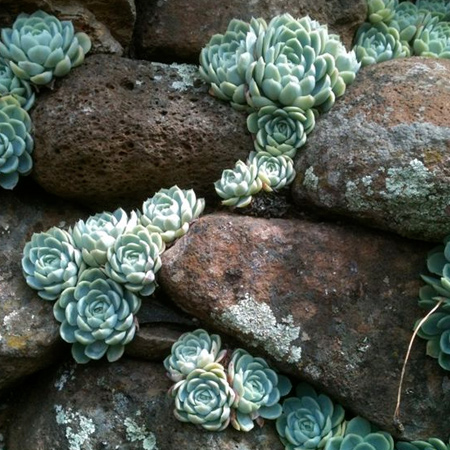How to Make Artificial Rocks with Cement
Being able to make your own artificial rocks is a cost effective way to add interest to garden landscaping or design unique water features.
20/04/2022
Not only are artificial rocks much lighter than the real thing, it's not easy to find large rocks that can be easily transported for installation in a garden setting. You can also pay a fortune for a few large boulders, while making your own won't cost you much, and you can buy everything you need to make artificial rocks and boulders at your local Builders Warehouse.
We have included a basic step-by-step tutorial below on how to make your own rocks and boulders, and there are hundreds of videos on YouTube that offer detailed instructions on this very simple process - so grab your supplies and spend a weekend making your own artificial rocks and boulders.
YOU WILL NEED:
Chicken wire or wire mesh
Newspaper, cardboard or styrofoam
Cement and sand
Tools for sculpting and adding texture
HERE'S HOW:
1. To make the form for the rock shape you can use styrofoam, cardboard or crumpled newspaper and thin wire mesh - even chicken wire.
2. Scrunch up the newspaper and cover with thin wire mesh and use your fingers to bend and shape the wire form. It helps to have a natural rock on hand to replicate the look.
3. Combine 3 parts sand with 1 part cement and slowly add water as you mix. You want a reasonably stiff mix - one that will hold its shape when placed over the form. Mix well to incorporate all dry ingredients and use the mix immediately.
4. Use a trowel to apply the cement mix over the wire form, working from the bottom up. Repeat this process until you have a 3 to 4cm thick layer over the form.
5. Before the cement dries, use your fingers to add character, detail and texture to the surface. You want to create contours and pattern that resembles rock. You can use your trowel to create creases and a sea sponge and scrunched up plastic bag for roughness.
GOOD TO KNOW
Any cement left over can be added to create dips and domes.
6. Put the rock in a warm, dry location and leave for 5 to 7 days. Do not move during this time.
GOOD TO KNOW
Lightly mist the surface during this time with a hose and cover with a plastic bag. This ensures the proper reaction takes place and the cement does not dry out too fast, which can result in cracks.
7. After 5 to 7 days you can smooth any rough edges using a steel brush. Scuff off any sharp edges.
8. Rinse with a hose and brush with a stiff brush as you wet to remove any loose bits of cement. Let this dry and then apply concrete stain and stone or concrete sealer.
GOOD TO KNOW
You can use a cup of cement and coloured pigment powder mixed together with water for a realistic colour base coat for artificial rocks - then seal. You will find concrete stain and pigment powder at your local Builders.
wikihow.com










